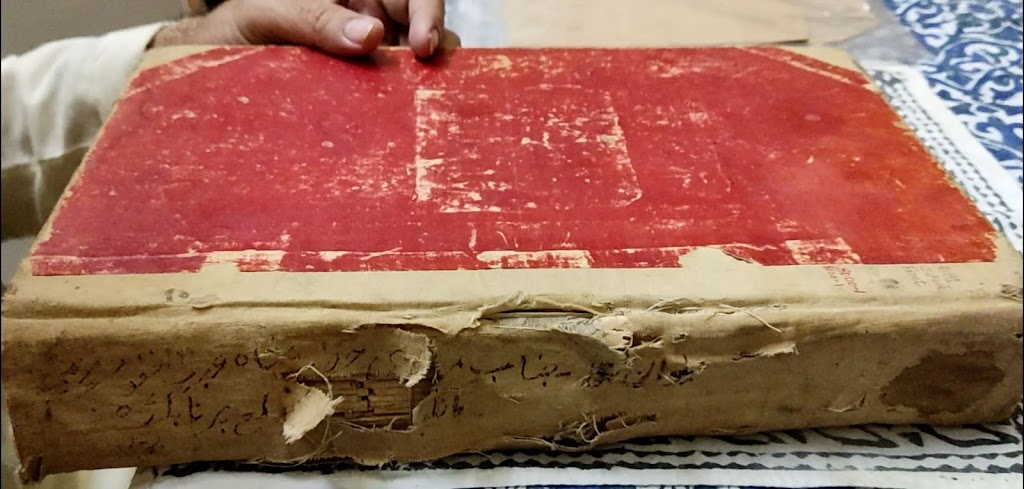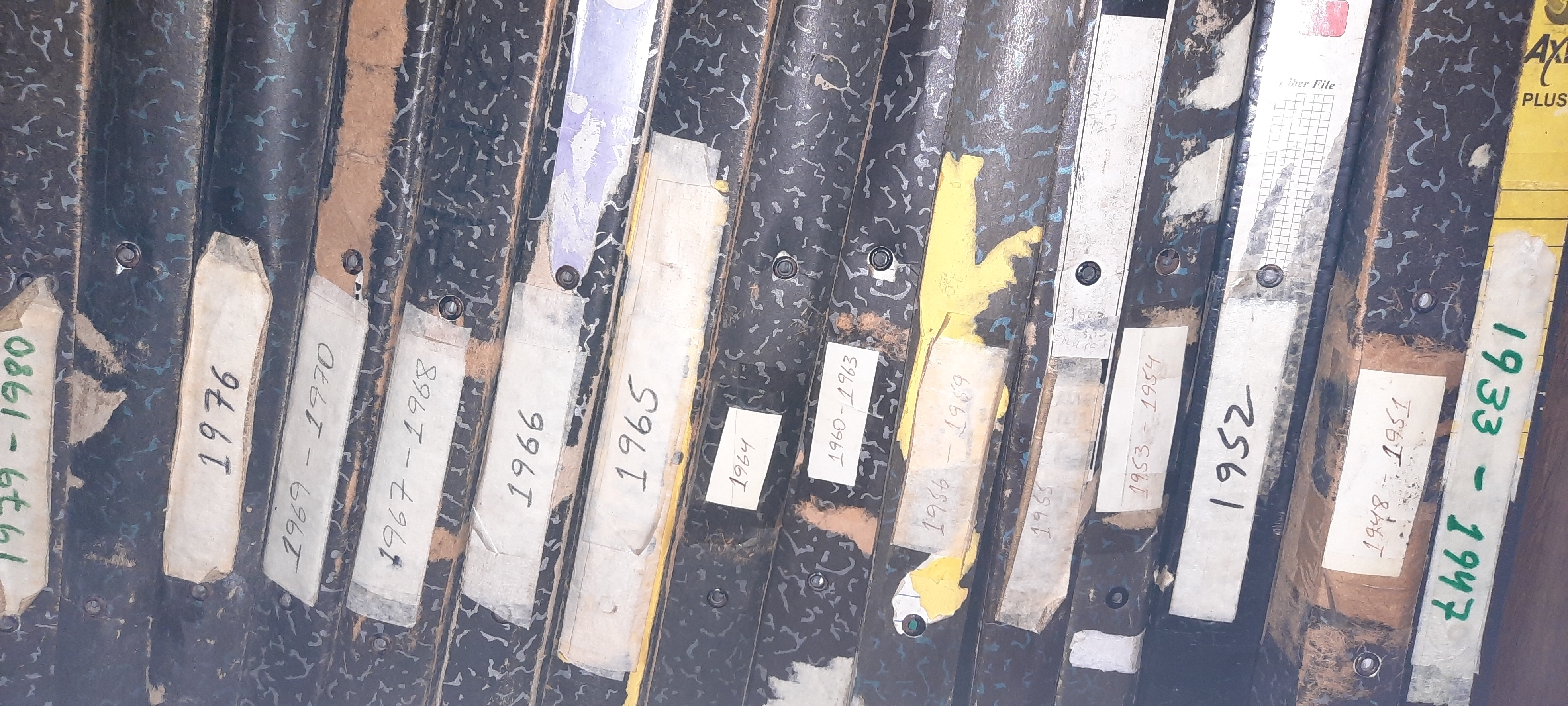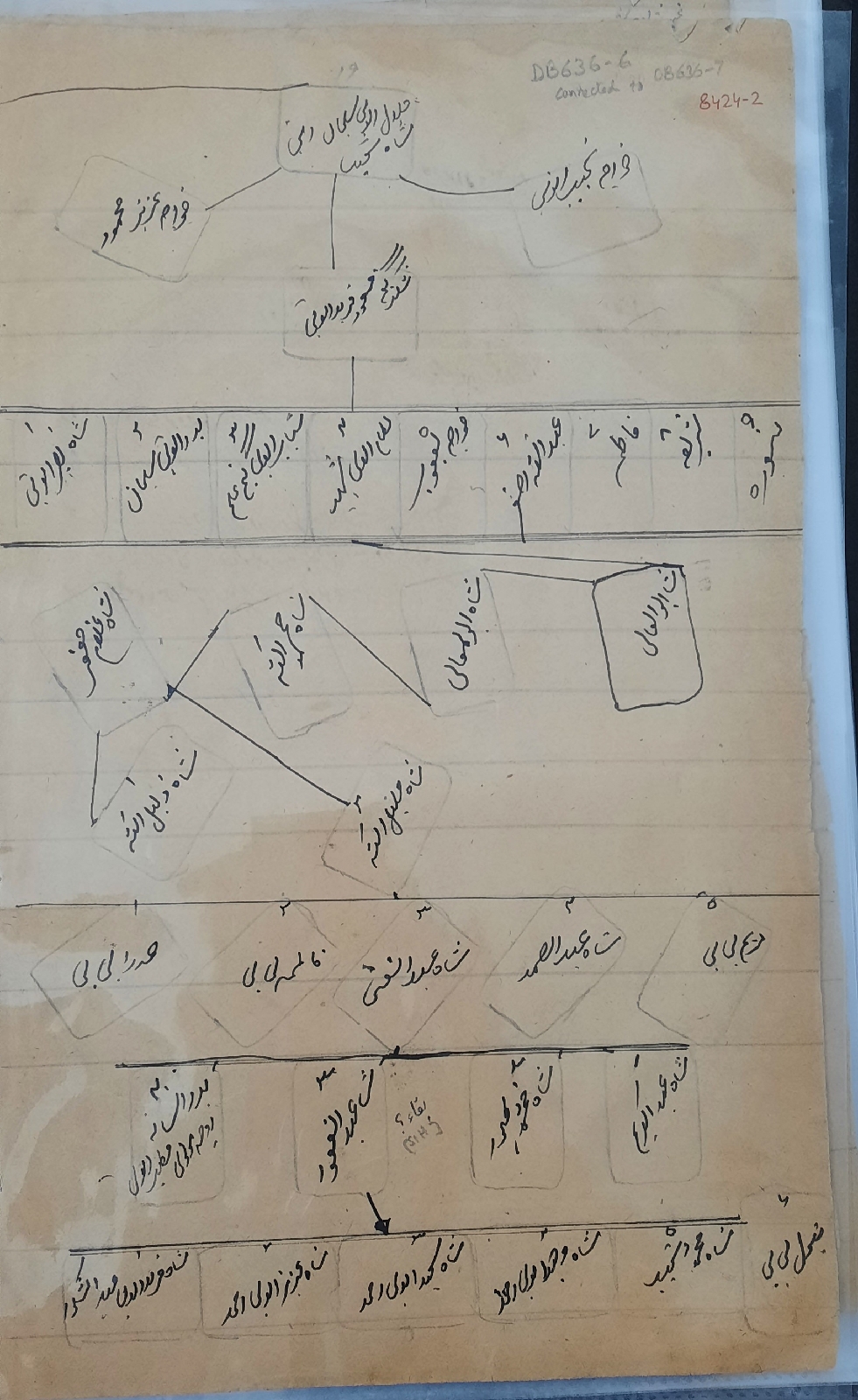This post describes how I am preserving the old handwritten poetic manuscripts written around 1880-1930. They had come to me in a bound volume as seen in the picture below. The binding was labeled Deewan-e-Baqa. Baqa being the poetic name, takhalus, of Shah Abdul Ghafoor Manikpuri. Baqa is used in several ghazal and poems in this volume. The experience of Archival of old manuscripts has taught me to become a “heritage detective”. The detective is pouring over these old handwritten poetic manuscripts trying to decipher the old hand writing, to find the links and clues spread in these manuscripts, to identify the years when they were written, to identify different handwritings, to identify the links between the different types of cotent pages that were collected in this bound volume, to understand the history of how these pages got collected in this binding which was done some 30-40 years later, to understand the chain of transmittal and weave a credible story around the discovered artifacts.
The next stage is the preservation in protector sheets of these old pages, sending them for scanning, typing and transcription followed by editing and proof reading. Then would come the stage of understanding of the contents, and connecting the contents with the social history of that time, and connecting them with the relevance of our times. This experience reminds me of how archeologists discover, date, investigate, link and try to understand the history of old times by connecting them with different related artificats of that time and the artifacts connected with that time and place.
The bound volume of Deewan-e-Baqa as shown in the picture has reached me through my mother’s collection of manuscripts and books. This bound volume was brought to Pakistan by my mother from her visit to Manikpur during May-July 1960. The visit was undertaken by my mother to have her mother Amna Khatoon meet her parents and her sister Ayesha Faridy who were residing in their ancestral house named Ghafoor Manzil in Garhi Manikpur.
Deewan-e-Baqa was hand bound some time after 1948, the clue to this date is the post office stamp on the inside thick paper in the inside of the hardcover. Handbinding tradition was to often reuse the waste paper and hardcovers of copies.. The inside of the hardcover resuses the thick paper envelope bearing the post office stamp of Yeotmal of which the year 1948 is visible. The binding was done to safeguard pages that were getting torn out by frequent manual handling over the previous 4 to 5 decades. Some of the pages were also getting crumpled, torn apart and were crumbling. These is evident from the restoration strengthening of the pages by pasting some new strong paper around the margins.
See Also: My Book Binding Experience of using reused paper and hard cover of copies in How I learned the Craft of Book Binding (https://irfanhyder.com/2019/12/how-i-learned-craft-of-book-binding)
This effort is part of the social history archival project which was initiated to preserve the family documents and letters in an archive that can then be used by socio-historical-religious researchers.
See: Social History Archival Project of Family Documents and Letters: Heritage Detectives (https://irfanhyder.com/2020/10/social-history-archival-project-of )
Contents of Deewan-e-Baqa bound volume
|
Sec# |
Description |
#Pages |
From |
To |
|
Sec-1: |
صوفیانہ کلام، غزل، منظوم کلام |
214 |
DB4 |
DB216 |
|
Sec-2: |
قطعہ تاریخ رحلت، تاریخ ولادت و دیگر |
50 |
DB217 |
DB266 |
|
Sec-3: |
مثنوی موسوعہ گلدستئہ معرفت: منظوم تزکرہ حالات |
156 |
DB267 |
DB423 |
|
Sec-4: |
قصیدہ امانت اللہ و تاریخ تیموریہ |
13 |
DB424 |
DB437 |
|
Sec-5: |
صوفیانہ کلام، غزل، منظوم کلام |
164 |
DB438 |
DB602 |
|
Sec-6: |
قطعہ تاریخ رحلت، تاریخ ولادت و دیگر |
31 |
DB 603 |
DB634 |
|
Sec-7: |
ضمیمہ نوٹس و شجرہ |
10 |
DB636 |
DB646 |
Interconnection with other relevant documents
- 1- Letters of Shah Abdul Shakur Manikpuri (1875-1962). He was the son of Shah Abdul Ghafoor and who was himself a poet. We have letters and manuscripts written by him and his daughter Ayesha Faridy (my nani’s sister) sent from Manikpur to Pakistan in 1950s and 1960s to my mother.
- 2- The letters have been compiled together, dated, scanned, transcribed in a word document, and have also been edited. These are in protector sheets in folders organized by years. The letters are kept in a chronological order to understand their connection with what was happening around that time. []
- 3- There are several poems and ghazals written by Shah Abdul Shakur Faridy that were transcribed by her daughter Ayesha Faridy (my nani’s sister) who was residing with him and his wife. Shah Abdul Shakur had lost his eyesight in 1950s and was old. Ayesha Faridy would send his poetry by writing what she most probably heard from him. [Details in Physical Folder B3, B4]
- 4- Handwritten notes by my mother taken during the visit to India. This contain the history of the parents and their parents of Shah Abdul Shakur Faridy that were either dictated by Shah Abdul Shakur Faridy or copied from some other document in his library. [Physical Folder B6]










Leave a Reply